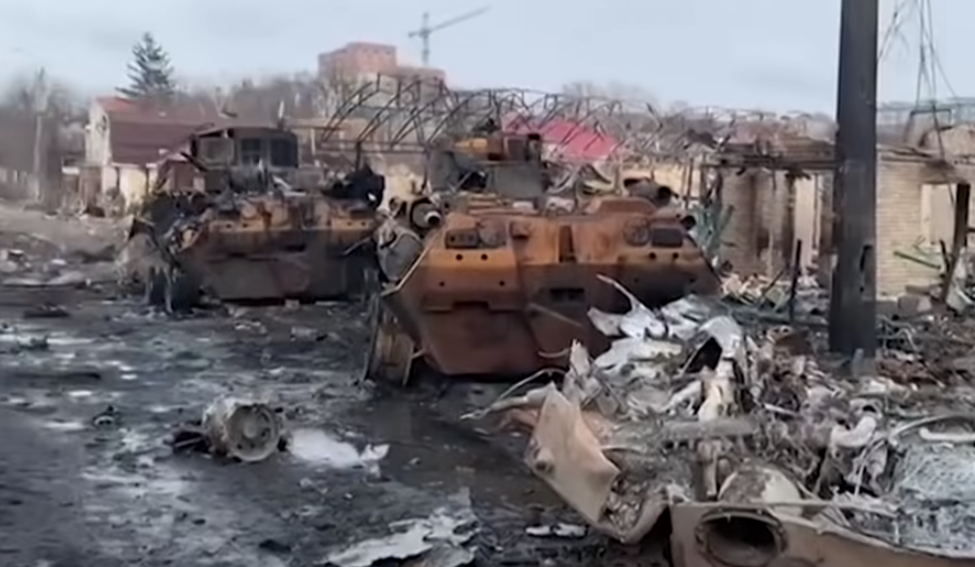By Scott Taylor
It has been nearly nine months since Vladimir Putin ordered the invasion of Ukraine. What was expected to be a lightning-strike armoured assault to capture Kyiv has turned into a long drawn out farcical rout of the Russian military.
Last week Putin’s senior defence officials went on Russian state television to announce they would be making a temporary tactical withdrawal from the Ukrainian city of Kherson.
With Ukraine having successfully destroyed or damaged the major bridges, the Russian military can no longer supply and sustain the roughly 40,000 soldiers in their Kherson bridgehead on the west bank of the Dnipro river. The fate of those Russian troops will be determined in the days ahead as Ukraine’s military continues to advance faster than the Russians can evacuate their forces back to the east bank of the Dnipro.
Of the original Russian invasion force of 120,000 combat troops, U.S. intelligence estimates that nearly 90,000 Russians have thus far been killed, wounded, captured or have deserted.
To make up the loss of frontline combat capable units, Putin reluctantly ordered the mobilization of 300,000 ill-motivated reservists.
In terms of equipment, Russian losses have been equally heavy with shattered armoured vehicles littering the Ukraine landscape from Kyiv to Kharkiv to Kherson.
To replenish this arsenal, Putin is able to tap into the vast fleets of moth-balled Soviet Union-era armoured vehicles. However, if the Russian first string of soldiers and weapons failed to defeat Ukraine forces, it is unlikely that these less trained, less motivated conscripts with antiquated tanks will somehow reverse the course of the war.
The best result Putin can hope for now is to slow the Ukraine counter offensive, dig in on the east bank of the Dnipro river and hope that crippling oil and gas shortages across western Europe force President Volodymir Zelenskyy’s allies to demand a negotiated settlement.
While much of the credit for Russia’s defeat goes to the Ukraine military’s courageous defence, their success would not be possible without the training, weapons, munitions and money supplied by NATO countries.
This is by definition a proxy war between Russia and NATO fought on Ukrainian soil. For the NATO cheerleaders, the good news for you is that western weapons and intelligence gathering remains vastly superior to the previously much-hyped Russian war machine. The bad news for the NATO cheerleaders is that any future fear mongering is likely to fall on deaf ears.
The standard talking point among the Colonel Blimp brigade is that Putin’s invasion of Ukraine has made the world that much more dangerous. They argue that if a madman can simply invade a sovereign state to overthrow the existing regime, then none of us are safe.
This narrow view of geopolitics conveniently omits the recent U.S. invasions of Iraq and Afghanistan and in the case of Libya, the western allies did not even bother trying to prop up a puppet regime. NATO simply bombed Libya into continual anarchy. But I digress.
On Feb. 24, 2022 as Russian tanks crossed the Ukraine frontier, it was admittedly a very scary development.
However, we now know that those vaunted Russian warriors are nowhere near a NATO standard.
Yet we still have fear mongers here in Canadian defence circles who point to the Arctic to remind Canadians that this dangerous rogue Russian regime is our northern neighbour.
Geographically that is true, and Russia has done far more to develop it’s Arctic resources than Canada. However, if Russian ground forces could barely advance a few hundred kilometres into Ukraine before their logistics and resupply collapsed into chaos, what chance could they have to conduct large scale military operations in the barren Arctic?
Likewise, the warmongers will then pivot and claim that Putin’s invasion of Ukraine has emboldened China to take action against Taiwan.
If that is indeed the case, I’m not sure exactly what example the Chinese would wish to follow.
The Russian military is being ground into oblivion by NATO’s sophisticated weaponry used in conjunction with its superior satellite intelligence gathering systems. While NATO has not declared war on Russia, members states – including Canada – have been quick to empty out their own arsenals to keep Ukraine winning the fight.
If China is watching this war, there are many lessons to be learned and the most important would be that a U.S – NATO backed adversary will still dominate the battlespace.
NATO countries may not have the political will to expend their own soldiers lives, but it seems they will happily supply weapons to a proxy nation to weaken their rivals.


